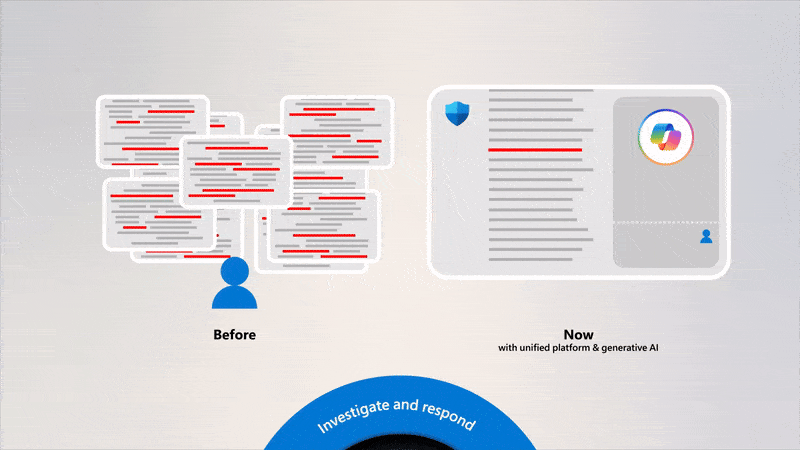Often, school technology teams are busy in the summer when educators and students are off in the northern hemisphere. Many schools and districts use this time to deploy new devices, configure apps, and improve infrastructure. Summer also offers a great opportunity to enhance security measures through settings, tools, and policies with minimal disruption to students, educators, and staff.
Microsoft Education prioritizes providing solutions and tools to help you be cybersafe. Learn five ways that you can prioritize cybersecurity—from using AI for school cybersecurity reports to implementing role access—to help keep your school and users safe during the school year.
- Assess vulnerabilities with Microsoft Defender XRD and Defender Vulnerability Management.
- Generate complex security reports with Microsoft Copilot for Security.
- Manage threats with Microsoft Defender, Sentinel, and SecOps.
- Implement role-based access with Microsoft Entra ID.
- Safeguard student devices with Microsoft Defender for Endpoint P2 – Students.

1. Assess vulnerabilities
It’s critical to regularly evaluate systems for vulnerabilities and security risks in addition to strategically setting up proactive controls and resilient infrastructure. Because school cyberthreats like phishing, malware, and data exfiltration deliberately seek and target known vulnerabilities, prioritize closing existing security gaps with vulnerability and risk assessments.
Microsoft Defender XDR offers various features to identify risks and vulnerabilities, complementing your existing Endpoint Detection and Response (EDR) solution, based on your subscription including Microsoft Defender Vulnerability Management. Play the video to learn how you can gain real-time insights for threat discovery.
2. Generate complex security reports with custom promptbooks
Microsoft Copilot for Security helps you increase your defense efficiency, capabilities, and outcomes at machine speed and scale, while remaining compliant with responsible AI principles.
This natural language, assistive experience can support you in end-to-end scenarios such as incident response, threat hunting, intelligence gathering, and posture management. Watch the video for a more comprehensive understanding of how Copilot for Security can help you use AI for cybersecurity in your school.
Copilot for Security includes built-in promptbooks—predefined sets of prompts that automate common, repeatable workstreams that generate complex security reports—and includes these time-saving features.
- Suspicious script analysis: Analyze the intent, intelligence, threat actors, and impacts of a suspicious script.
- Microsoft Defender incident investigation: Learn about a specific incident, with related alerts, reputation scores, users, and devices.
- Threat actor profile: Profile a known actor with suggestions for protecting against common tools and tactics.
- Vulnerability impact assessment: Summarize the intelligence for a known vulnerability and how to address it.
- Microsoft Sentinel incident investigation: Explore a specific incident, along with related alerts, reputation scores, users, and devices.
Explore the Get started with Microsoft Copilot for Security learning path on Microsoft Learn to discover prompting tips and more.
3. Manage threats
Schools must identify and mitigate known threats and vulnerabilities. A cybersecurity framework (CSF) assists in managing risks, identifying threats, safeguarding infrastructure, and communicating initiatives. You can rely on Microsoft’s security solutions like Microsoft Defender, Sentinel, and SecOps platform to meet these needs.
- Microsoft Defender XDR: Secures endpoints, identities, workloads, and data, and protects against cyberthreats.
- Microsoft Sentinel: Responds to cyberthreats through data analysis, automation, and machine learning.
- SecOps platform: Unifies XDR and SIEM capabilities for real-time threat detection, exposure management, and AI-driven response.

4. Implement role-based access
Access control is a vital component of security strategy because it helps keep sensitive information from falling into the hands of bad actors. It’s one of the best tools that you can use to minimize the security risk of unauthorized access to data—particularly data stored in the cloud.
As schools use more endpoints, the risk of unauthorized access increases, highlighting the need for comprehensive access control policies. Identity and access management solutions, like Microsoft Entra ID, can simplify the administration of these policies. Recognizing the need to govern how and when data is accessed is the first step.
- Connect on goals: Align with stakeholders on the importance of access control solutions.
- Set strong policies: Design policies to grant, limit, or block access as needed.
- Follow best practices: Set up emergency accounts, apply policies to all apps, test before enforcing, standardize naming, and plan for disruptions.
Explore ways that you can use Microsoft Entra ID for app management, authentication, and more.

5. Secure student devices
Manage technology and maximize security
Explore Microsoft 365 EducationSafeguarding student devices against malicious activity has never been more crucial, and Microsoft Defender for Endpoint P2 – Students is here to help. Defender for Endpoint P2 – Students delivers enhanced cybersecurity for students, including device protection that shields students’ devices from phishing, malware, and other attacks. Microsoft integrates advanced cybersecurity measures with Microsoft 365 and other classroom applications to mitigate risks and ensure a secure learning environment for everyone.
Read our blog post about Microsoft Defender for Endpoint P2 – Students to learn more.

In today’s rapidly changing landscape, embracing cybersecurity innovation is crucial. Microsoft is committed to making cybersecurity accessible and affordable for schools by assessing vulnerabilities, generating security reports, managing threats, implementing role-based access, and safeguarding student devices. Learn more with the Secure K-12 school IT practices and systems with Microsoft tools training module on Microsoft Learn.
Join us in creating a safer, more resilient learning environment for students, educators, and staff everywhere.










